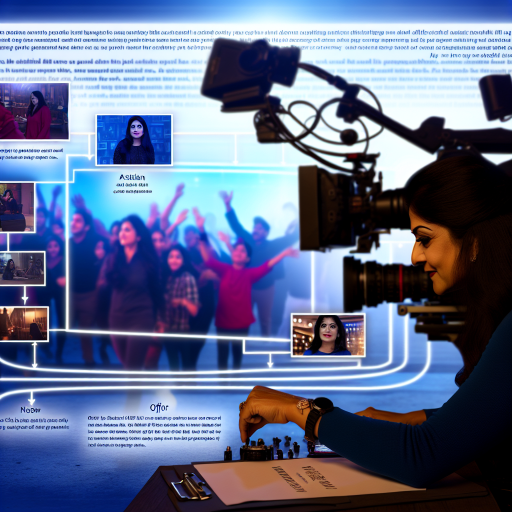Introduction
Corporate training in communications focuses on enhancing employees’ communication skills within an organization.
This training includes both verbal and non-verbal communication strategies.
It aims to improve interactions among team members and with clients.
Importance of Effective Communication in the Corporate World
Effective communication forms the backbone of a successful business.
Clear messages foster collaboration and reduce misunderstandings.
When employees communicate well, they enhance productivity and boost morale.
Moreover, strong communication skills help build lasting relationships with clients.
It is crucial for negotiating deals and resolving conflicts swiftly.
Organizations with effective communication witness higher employee engagement and lower turnover rates.
Brief Overview of Current Trends in Corporate Training
Today, corporate training in communications is rapidly evolving to meet new demands.
One significant trend is the integration of technology.
Virtual reality and gamification make training more engaging and interactive.
Another trend focuses on personalized learning experiences.
Companies now tailor training programs to meet individual employee needs.
This approach ensures that employees grasp essential communication skills at their own pace.
Remote work has also influenced training methods.
Organizations increasingly offer online modules to accommodate hybrid work environments.
These digital platforms enable flexibility and accessibility for everyone involved.
Soft skills training is gaining prominence as well.
Employers emphasize the importance of empathy, listening, and emotional intelligence.
Transform Your Career Today
Unlock a personalized career strategy that drives real results. Get tailored advice and a roadmap designed just for you.
Start NowThese skills are vital for enhancing workplace culture and employee relations.
Lastly, ongoing training and development have become standard practices.
Organizations recognize that communication skills need continual refinement.
Regular workshops and refreshers keep employees’ skills sharp and relevant.
Future of Corporate Training in Communications
The future of corporate training in communications appears bright.
By investing in effective communication strategies, companies can cultivate stronger teams and foster successful relationships.
The Shift Towards Digital and Virtual Training
The transition to digital and virtual training has reshaped corporate training in communications.
Many organizations now host webinars, virtual workshops, and online courses.
This shift stems from the need for flexibility and accessibility in employee training programs.
Remote work arrangements have highlighted the importance of communication skills among team members.
With teams spread across various locations, effective communication remains a priority.
In this context, digital and virtual training platforms have gained popularity.
They enable companies to reach a wider audience and provide training to all employees.
Businesses can conduct training at their convenience, breaking the barriers of time and location.
Such flexibility allows professionals to balance work and learning, enhancing overall productivity.
Advantages of Digital Training Tools
Digital training tools bring a myriad of benefits to corporate communications training.
These advantages enhance learning experiences and organizations’ overall efficiency.
Below are some key benefits of adopting digital training tools:
- Cost-Effective: Digital training reduces travel costs associated with in-person training. It eliminates expenses related to venues and printed materials.
- Scalability: Organizations can cater to large groups without the constraints of physical space. Digital platforms accommodate any number of participants.
- Accessibility: Employees can access training materials anytime and anywhere. This level of convenience promotes continual learning.
- Personalization: Digital training allows tailored learning paths based on individual needs. Employees can progress at their own pace.
- Interactive Learning: Digital tools offer interactive content, quizzes, and gamified elements. Such features engage learners and make training enjoyable.
- Real-Time Analytics: Trainers can track participant progress and engagement through analytics. This data helps to refine future training efforts.
Challenges of Virtual Training
While digital training offers many advantages, challenges also arise in its implementation.
Showcase Your Business Today
Reach thousands of readers actively exploring professional services. Publish your business profile and grow your audience now.
Publish NowUnderstanding these obstacles can help organizations navigate them more effectively.
Below are some common challenges faced in virtual training environments:
- Technological Limitations: Not all employees have equal access to technology or reliable internet connections. This can lead to disparities in training experiences.
- Distractions: Learners may become distracted by their surroundings during virtual training. Home environments often contain numerous interruptions.
- Reduced Personal Interaction: Virtual training can lack the personal touch of face-to-face interactions. This may hinder team bonding and networking opportunities.
- Engagement Issues: Keeping participants engaged might be challenging in a virtual setting. Lack of engagement can result in diminished training effectiveness.
- Technical Competency: Employees may struggle to navigate digital platforms or tools. This can lead to frustration and decreased participation levels.
Strategies to Ensure Engagement and Participation in Virtual Training Sessions
Creating an engaging virtual training environment is critical for success.
Organizations must implement strategies that encourage active participation.
Here are effective ways to boost engagement during virtual training:
- Use Interactive Tools: Incorporate polls, quizzes, and breakout sessions. These tools foster interaction and maintain interest throughout the training.
- Set Clear Objectives: Communicate the training goals and expected outcomes upfront. This provides participants with a clear purpose and motivates them.
- Encourage Communication: Promote open dialogue among participants. Encourage questions and discussions to create a collaborative learning atmosphere.
- Gamify the Training: Introduce elements of gamification such as rewards and points systems. This adds a fun dimension to the learning experience.
- Utilize Multimedia Content: Include videos, infographics, and presentations. Diverse content types cater to different learning styles and keep engagement high.
- Break Up Sessions: Split training sessions into smaller segments. Shorter sessions prevent fatigue and maintain learner attention.
- Provide Supplemental Resources: Offer additional reading materials or links to videos. This helps employees delve deeper into the subject matter.
- Gather Feedback: Collect participant feedback after sessions. Use insights to improve future training and address any shortcomings.
By focusing on engagement and participation, businesses can ensure effective communication training for their employees.
As workplaces continue to evolve, so too will corporate training practices.
This transformation ultimately shapes the future of business communications.
Corporate training programs are constantly evolving.
Organizations recognize the necessity for effective communication skills.
Personalized and adaptive learning plays a crucial role in this evolution.
This approach acknowledges the diverse needs of employees.
It also enhances knowledge retention and application.
Ultimately, this leads to better business outcomes.
Importance of Personalized Learning in Corporate Training
Personalized learning focuses on the unique needs of each employee.
Traditional training methods often adopt a one-size-fits-all approach.
This can leave some employees disengaged or unchallenged.
Here are key reasons why personalized learning is essential:
- Enhanced Engagement: Employees are more engaged when training aligns with their personal goals.
- Improved Retention: Tailoring content according to individual learning styles helps improve knowledge retention.
- Increased Productivity: Personalized training equips employees with relevant skills faster, boosting productivity.
- Higher Satisfaction: Employees appreciate tailored training, leading to improved job satisfaction and morale.
- Skill Gaps Addressed: Personalized learning allows organizations to target specific skill gaps effectively.
This focus on personalization fosters a growth-oriented culture.
When employees receive relevant training, they feel valued.
Consequently, this boosts their commitment to the organization.
Benefits of Adaptive Learning Platforms
Adaptive learning platforms represent a significant advancement in corporate training.
These platforms adjust content in real-time based on employee performance.
Here are some benefits of using adaptive learning technologies:
- Customized Learning Paths: Adaptive platforms create unique learning pathways for each individual.
- Real-time Feedback: Employees receive immediate feedback on their progress, facilitating quick adjustments.
- Data-Driven Insights: Organizations gain valuable insights into individual and group learning trends.
- Continuous Improvement: Adaptive platforms evolve with the organization’s needs, ensuring ongoing relevance.
- Self-Paced Learning: Employees can learn at their own pace, which enhances understanding and application.
These benefits contribute to a more effective training environment.
Adaptive learning platforms empower employees and cater to their individual needs.
As a result, corporate training becomes more dynamic and impactful.
How AI and Machine Learning Can Tailor Training Programs
Artificial Intelligence (AI) and machine learning (ML) are transforming corporate training landscapes.
These technologies enable companies to optimize training programs.
They allow for more personalized learning experiences.
Here are ways AI and ML can enhance corporate training:
- Assessment of Learning Styles: AI can analyze data to identify individual learning preferences.
- Content Recommendation: ML algorithms can suggest tailored courses and resources based on employee interests.
- Predictive Analytics: AI can predict skill gaps before they become problematic, allowing proactive training.
- Enhanced User Experience: AI-powered systems create a more intuitive interface for learners.
- Gamification Elements: Incorporating game mechanics can increase motivation and engagement among employees.
By integrating AI and ML into training programs, organizations can enhance the learning experience.
These technologies create a more immersive and relevant training environment.
Implementing Personalized and Adaptive Learning
Successful implementation of personalized and adaptive learning requires careful planning.
Organizations must assess their current training programs.
This helps identify areas for improvement.
Consider the following steps:
- Define Objectives: Clearly outline the training goals and expected outcomes.
- Evaluate Current Methods: Assess existing training methods and identify gaps in personalization.
- Choose the Right Technology: Select adaptive learning platforms that align with organizational needs.
- Develop Content: Curate or create personalized content relevant to diverse employee roles.
- Train Facilitators: Equip trainers and managers with the skills to support adaptive learning.
- Monitor and Evaluate: Regularly assess the effectiveness of training programs and make adjustments.
This structured approach ensures successful integration of personalized and adaptive learning.
Organizations must remain flexible and responsive to changing needs.
Embracing the Future of Corporate Training
The future of corporate training lies in personalized and adaptive learning.
Showcase Your Business Today
Reach thousands of readers actively exploring professional services. Publish your business profile and grow your audience now.
Publish NowThese approaches address the unique needs of each employee.
Organizations benefit from improved engagement, retention, and productivity.
Adaptive learning platforms leverage technology to optimize training experiences.
By utilizing AI and machine learning, businesses can create tailored programs.
The result is a workforce that is not only more skilled but also more engaged.
Investing in personalized and adaptive learning is essential.
It sets the foundation for ongoing success in a competitive landscape.
See Related Content: Key Differences Between In-house and Agency Publicists
The landscape of corporate training is changing rapidly.
As businesses seek to adapt to new market demands, the integration of soft skills training becomes vital.
In an age dominated by technological advancements, hard skills alone no longer guarantee success.
Definition of Soft Skills and Their Importance in the Workplace
Soft skills are interpersonal attributes that impact how individuals interact and work with others.
They include various skills such as communication, teamwork, problem-solving, and emotional intelligence.
These skills complement hard skills, enhancing overall performance and productivity.
The importance of soft skills in the workplace cannot be overstated.
Here are some key reasons why soft skills are essential:
- Enhanced Communication: Employees with strong soft skills communicate effectively and convey ideas clearly.
- Improved Team Dynamics: Soft skills strengthen teamwork and promote collaboration among colleagues.
- Conflict Resolution: Employees adept in soft skills can navigate conflicts efficiently and maintain harmony.
- Leadership Development: Strong soft skills enable leaders to inspire and motivate their teams.
- Adaptability: Employees with soft skills are more adaptable to changing business environments and challenges.
Incorporating Modules on Emotional Intelligence, Conflict Resolution, and Leadership Development in Corporate Training Programs
Incorporating soft skills training into corporate programs is essential.
Specific modules on emotional intelligence, conflict resolution, and leadership development can drive significant improvements.
Emotional Intelligence
Emotional intelligence (EI) refers to the ability to recognize, understand, and manage emotions in oneself and others.
Individuals with high EI can navigate social complexities with ease.
Here are ways to include EI in corporate training:
- Workshops: Conduct workshops focusing on self-awareness and emotional regulation.
- Role-Playing: Use role-playing scenarios to practice responses to emotional situations.
- Peer Feedback: Encourage peer assessments to promote self-reflection among employees.
Conflict Resolution
Conflict is inevitable in the workplace.
Effective conflict resolution strategies can lead to constructive outcomes.
Here’s how to incorporate this into training:
- Training Programs: Develop training programs that focus on mediation techniques.
- Case Studies: Utilize real-life scenarios for analysis and discussion among participants.
- Group Activities: Implement exercises that require collaboration and negotiation among team members.
Leadership Development
Leadership is a vital component of any organization.
Training future leaders through effective programs ensures a successful organizational structure.
Here’s how to incorporate leadership development:
- Mentorship Programs: Pair emerging leaders with experienced mentors for guidance.
- Leadership Workshops: Conduct workshops focused on decision-making and inspiring teams.
- Shadowing Opportunities: Allow employees to shadow leaders to learn through observation.
How to Assess the Effectiveness of Soft Skills Training
Evaluating the effectiveness of soft skills training is crucial for continuous improvement.
Organizations need to implement robust assessment strategies.
Here are techniques for effective assessment:
- Feedback Surveys: Use surveys before and after training to gauge skill improvement.
- Performance Metrics: Track employee performance metrics to identify changes post-training.
- Behavioral Assessments: Conduct assessments through manager observations in the workplace.
- Peer Reviews: Encourage team members to provide feedback on observed soft skills.
- ROI Analysis: Analyze the return on investment to evaluate training impact on business goals.
As organizations progress, the emphasis on soft skills will only increase.
Integrating these skills into corporate training programs fosters a holistic approach to employee development.
Investing in employees equips them with the necessary tools to succeed.
This prepares them not only for current challenges but also for future business landscapes.
By focusing on emotional intelligence, conflict resolution, and leadership development, companies empower their workforce.
This transformation leads to enhanced collaboration, productivity, and employee satisfaction.
As a result, businesses position themselves for sustained success in an ever-evolving market.
Learn More: How to Build a Strong VFX Artist Portfolio
Gamification in Training
Gamification refers to the integration of game-like elements into non-gaming contexts.
In corporate training, gamification immerses employees in engaging learning experiences.
This approach transforms traditional training into active, enjoyable participation.
Showcase Your Business Today
Reach thousands of readers actively exploring professional services. Publish your business profile and grow your audience now.
Publish NowDefinition of Gamification and Its Application in Corporate Training
Gamification leverages elements such as points, badges, and leaderboards to enhance training outcomes.
It harnesses the motivational power of games to encourage learners.
Organizations apply gamification to various training modules, including communication skills, leadership development, and compliance training.
Incorporating gaming components makes training interactive and stimulating.
Employees become active participants instead of passive learners.
Game mechanics create goals and provide instant feedback, promoting a sense of achievement.
Common components of gamification are:
- Points: Earn points for completing tasks, attending sessions, or answering questions.
- Badges: Receive badges for milestones, such as completing a module or demonstrating proficiency.
- Leaderboards: Display rankings to foster competition and recognition among participants.
- Challenges: Engage employees in quests or tasks that require skill and determination to complete.
Benefits of Incorporating Game Elements in Training Programs
Employers gain numerous advantages when they incorporate gamification into training.
These benefits include improved engagement, motivation, and retention rates.
Key benefits include:
- Enhanced Engagement: Gamified training captures attention more effectively than traditional methods.
- Increased Motivation: Rewards and recognition motivate employees to complete training.
- Better Knowledge Retention: Game elements help reinforce learning.
- Immediate Feedback: Gamification provides instant results and feedback.
- Fostering Collaboration: Team-based challenges encourage collaboration among employees.
- Flexibility and Accessibility: Many gamified training solutions are available online.
Examples of Successful Gamified Training Initiatives in Corporate Settings
Many companies have implemented gamified training successfully.
These initiatives highlight the effectiveness of this engaging approach.
Some notable examples include:
- IBM: IBM integrated gamification into its corporate training.
- Deloitte: Deloitte utilized gamified simulations in their leadership training.
- Cisco: Cisco’s gamified approach includes competitive training sessions.
- Salesforce: Salesforce created a gamified learning platform called Trailhead.
- Unilever: Unilever incorporated gamification into its onboarding process.
These examples demonstrate how gamification can enhance corporate training programs.
Major organizations have seen increased engagement and improved learning outcomes.
Future Trends in Gamification for Corporate Training
The future of gamification in corporate training appears bright.
Companies will continue to explore new technologies to enhance engagement.
Virtual and augmented reality will become more prevalent, immersing employees in realistic scenarios.
AI-driven personalization will tailor training experiences to individual needs.
Gamification strategies will evolve as organizations gain insights into employee preferences.
Data analytics will help understand engagement patterns, allowing for further refinement.
Additionally, organizations may adopt a hybrid approach.
Combining traditional learning methods with gamified elements creates a well-rounded training experience.
This strategy promotes engagement while also delivering essential knowledge effectively.
Incorporating gamification into corporate training programs revolutionizes how organizations educate their employees.
By engaging learners through game elements, companies boost motivation, knowledge retention, and collaboration.
Businesses will continue to innovate and embrace gamification as a vital component of effective training strategies.
See Related Content: Maintaining Objectivity as a News Anchor

Emphasis on Continuous Learning
The modern business landscape evolves at a breakneck pace.
Organizations must adapt to stay competitive.
Continuous learning becomes a critical factor for success.
This necessity extends to communication skills as well.
Effective communication drives collaboration, innovation, and productivity.
Importance of Continuous Learning
In today’s rapidly changing business environment, continuous learning is not optional; it is essential.
Here’s why:
- Adapting to Change: Industries face constant technological advancements.
- Skill Gaps: Employees often lack skills in emerging communication technologies.
- Employee Engagement: Continuous learning fosters engagement and job satisfaction.
- Competitive Advantage: Organizations that prioritize learning gain an edge over competitors.
Implementing a Culture of Learning
Creating a culture of continuous learning requires intentional actions.
Organizations must support and encourage ongoing development.
Here are key strategies to implement this culture:
- Leadership Commitment: Leaders must model lifelong learning.
- Regular Training Programs: Companies should organize workshops and seminars frequently.
- Inclusive Learning Opportunities: Provide various learning paths for diverse employee needs.
- Feedback Mechanisms: Encourage employees to provide input for improvement.
By embedding these strategies, businesses create an environment where learning thrives.
Employees feel empowered to enhance their skills.
Showcase Your Business Today
Reach thousands of readers actively exploring professional services. Publish your business profile and grow your audience now.
Publish NowThis approach not only boosts morale but also drives performance.
Opportunities for Upskilling and Reskilling
Organizations must provide employees with the tools to grow.
Continuous training programs are vital for upskilling and reskilling.
These programs should cover various communication-related topics.
Here are some effective training options:
- Workshops: Interactive sessions on specific communication skills.
- Online Courses: Flexible, self-paced learning through online platforms.
- Mentorship Programs: Pairing employees with seasoned mentors fosters knowledge sharing.
- Peer Learning: Encourage teams to share experiences and learn together.
Fostering a Lifelong Learning Mindset
Organizations should encourage employees to embrace a lifelong learning mindset.
This approach enhances adaptability and resilience.
Here are actionable steps to foster this mentality:
- Encourage Curiosity: Promote a workplace culture that values questions and exploration.
- Recognize Efforts: Acknowledge employees who demonstrate initiative in learning.
- Set Learning Goals: Help employees define personal learning objectives.
- Promote Networking: Facilitate connections with industry professionals for broader perspectives.
By nurturing this mindset, organizations help employees thrive in a dynamic job landscape.
They are more prepared to tackle challenges and seize opportunities.
Technology’s Role in Corporate Training
Technology plays a crucial role in enhancing corporate training.
Companies can leverage numerous digital tools to facilitate continuous learning.
Here are key technologies transforming the training landscape:
- LMS (Learning Management Systems): These platforms streamline training delivery.
- Virtual Reality (VR): VR allows immersive learning experiences for real-life simulations.
- Artificial Intelligence (AI): AI enables personalized learning paths based on individual progress.
- Mobile Learning: Access to training resources via mobile devices promotes learning anytime, anywhere.
Integrating these technologies into training programs maximizes engagement and effectiveness.
Employees appreciate the flexibility and interactivity offered by modern learning tools.
Measuring the Impact of Continuous Learning
Organizations must assess the effectiveness of their training initiatives.
Measuring the impact ensures continuous improvement.
Consider these methods:
- Surveys and Feedback: Regularly gather employee feedback to identify areas for enhancement.
- Performance Metrics: Track improvements in job performance post-training.
- Course Completion Rates: Analyze participation and completion statistics for programs.
- Return on Investment (ROI): Calculate the financial benefits derived from training investments.
Using these metrics allows organizations to adapt their learning strategies effectively.
Continuous feedback loops drive better outcomes for both employees and the organization.
The future of corporate training in communications hinges on continuous learning.
Organizations must prioritize learning as a core value.
By fostering a culture of learning, providing training opportunities, and leveraging technology, companies enhance their competitive advantages.
Employees equipped with continual upskilling and reskilling remain adaptable and engaged.
Organizations that embrace this paradigm shift will thrive in the rapidly changing business world.
Uncover the Details: How to Handle Content Strategy Challenges
In today’s rapidly evolving corporate environment, training programs must prioritize accessibility and inclusivity.
Corporations increasingly recognize the importance of making training initiatives available to all employees.
This inclusivity enhances team cohesion and drives productivity.
Ensuring Accessibility for All Employees
Creating training programs that everyone can participate in involves several key strategies:
- Adaptive Learning Technologies: Utilize e-learning tools that adapt to various learning styles and needs. For instance, platforms like Moodle or Tableau offer customizable experiences.
- Flexible Formats: Provide training in multiple formats, such as video, text, and interactive modules. This ensures all employees can engage positively with the content.
- Assistive Technologies: Integrate assistive technologies, such as screen readers and speech recognition. This support is essential for employees with disabilities.
- Physical Accessibility: Ensure that training locations are physically accessible. This includes providing ramps and accessible meeting rooms.
- Feedback Mechanisms: Establish channels for employees to provide feedback on accessibility features. This helps continuously improve training programs.
By implementing these strategies, corporations can ensure that training programs accommodate diverse employee needs.
This approach fosters an environment where everyone feels valued and included.
Addressing Language and Cultural Barriers
In a globalized workplace, addressing language and cultural barriers in communication training is essential.
Diversity in language and culture can lead to misunderstandings.
By focusing on inclusivity, organizations can mitigate these issues:
- Multilingual Training Materials: Provide training materials in multiple languages. This ensures non-native speakers can fully comprehend the content.
- Cultural Sensitivity Training: Incorporate cultural awareness and sensitivity training. This helps employees understand and appreciate diverse backgrounds.
- Simple Language Use: Use clear and straightforward language in training programs. Avoid jargon to enhance comprehension for all employees.
- Localized Content: Tailor content to reflect local cultures and practices. This makes training more relevant and engaging.
- Language Support: Offer language support for employees who need assistance. This can include access to language courses or translation services.
By prioritizing these considerations, corporations can create a more inclusive training environment.
It ensures all employees feel comfortable and empowered to communicate effectively.
Promoting Diversity and Inclusion through Training Initiatives
Training should go beyond compliance; it should actively promote diversity and inclusion.
Inclusion fosters a sense of belonging and empowers employees to engage fully.
Here are effective ways to promote these values:
- Leadership Commitment: Demonstrate a commitment to diversity by ensuring leaders champion training initiatives. Leaders should lead by example and participate in their own professional development.
- Equitable Opportunities: Ensure training opportunities are equitably available to all employees. Track participation rates to identify potential disparities.
- Inclusive Content: Develop training materials that reflect diverse perspectives. Representation in training materials makes all employees feel seen and valued.
- Employee Resource Groups: Encourage participation in employee resource groups (ERGs). These groups provide support and foster connections across diverse backgrounds.
- Regular Assessment: Conduct regular assessments of training programs. Gather feedback from participants to identify areas for improvement regarding diversity and inclusivity.
By implementing these strategies, organizations can create a workplace that champions diversity and inclusion.
Showcase Your Business Today
Reach thousands of readers actively exploring professional services. Publish your business profile and grow your audience now.
Publish NowThis commitment fosters innovation, collaboration, and better decision-making.
An inclusive environment encourages employees to share their ideas, leading to more effective communication.
The Future of Corporate Training
Accessibility and inclusivity will play a crucial role in shaping the future of corporate training.
Organizations that prioritize these values will position themselves to thrive.
Here are key trends to watch:
- Personalized Learning Experiences: Companies will increasingly utilize AI and data analytics to offer tailored training experiences. These personalized programs will meet individual learning needs.
- Collaborative Learning Environments: Virtual and hybrid work environments will promote collaborative learning. Employees will learn from one another and share diverse perspectives.
- Micro-Learning: Bite-sized training modules will gain popularity. Micro-learning enhances engagement and retention, making training more effective.
- Focus on Soft Skills: Companies will increasingly recognize the importance of soft skills training. Effective communication, empathy, and collaboration will become top priorities.
- Integration of Diverse Perspectives: Training programs will increasingly incorporate diverse perspectives. This will enhance creativity and innovation within organizations.
As organizations embrace these trends, they will create a more inclusive workforce ready to face future challenges.
Accessibility in training programs is not just a checkbox; it is a strategic imperative.
Forward-thinking companies understand that inclusivity drives not only employee satisfaction but also business success.
The future of corporate training in communications hinges on accessibility and inclusivity.
By addressing the needs of all employees, organizations will cultivate more robust communication skills.
Embracing diversity, overcoming language barriers, and creating inclusive training environments will position companies as leaders in today’s competitive landscape.
Transformative Landscape of Corporate Training in Communications
In this blog post, we explored the transformative landscape of corporate training in communications.
We highlighted the critical role of technology and innovation in reshaping training methodologies.
Emphasis was placed on personalized learning, which tailors programs to individual employee needs.
Additionally, we discussed the integration of virtual reality and artificial intelligence for immersive training experiences.
Organizations must recognize the urgency to adapt to these emerging trends.
The rapid pace of change in the workplace demands a proactive approach.
Companies that invest in advanced training resources will outperform their competitors.
They will create a culture of continuous learning that nurtures employees’ talents.
Moreover, we emphasized the importance of fostering soft skills alongside technical training.
Communication skills will remain essential for team collaboration and management.
Effective communication can drive organizational success and foster a positive work environment.
Organizations that prioritize these skills will see enhanced employee engagement and productivity.
As we look toward the future, staying informed about evolving training methods is crucial.
Businesses need to monitor trends that impact their industry.
Encourage your team to engage in ongoing professional development.
This initiative ensures that skills remain relevant and competitive.
Employees also play a vital role in their development.
They should take ownership of their learning journey.
By actively seeking training opportunities, they enhance their communication skills.
They become valuable assets within their organizations.
Corporate training in communications is entering an exciting new era.
Organizations and employees must embrace this shift collectively.
Staying proactive and informed will empower both parties to thrive in the evolving workplace.
Let us commit to continuous learning and improvement to shape the future of communication in business.
Additional Resources
Department of Journalism & Media Communication – Journalism …
FEMA National Disaster & Emergency Management University …
[E-Books for Sale]
The Big Book of 500 High-Paying Jobs in America: Unlock Your Earning Potential
$19.99 • 500 High-Paying Jobs • 330 pages
Explore 500 high-paying jobs in America and learn how to boost your career, earn more, and achieve success!
See All 500 High-Paying Jobs of this E-Book
1001 Professions Without a Degree: High-Paying American Jobs You Can Start Now
$19.99 • 1001 Professions Without a Degree • 174 pages
Discover 1001 high-paying jobs without a degree! Unlock career tips, skills, and success strategies for just $19.99!




